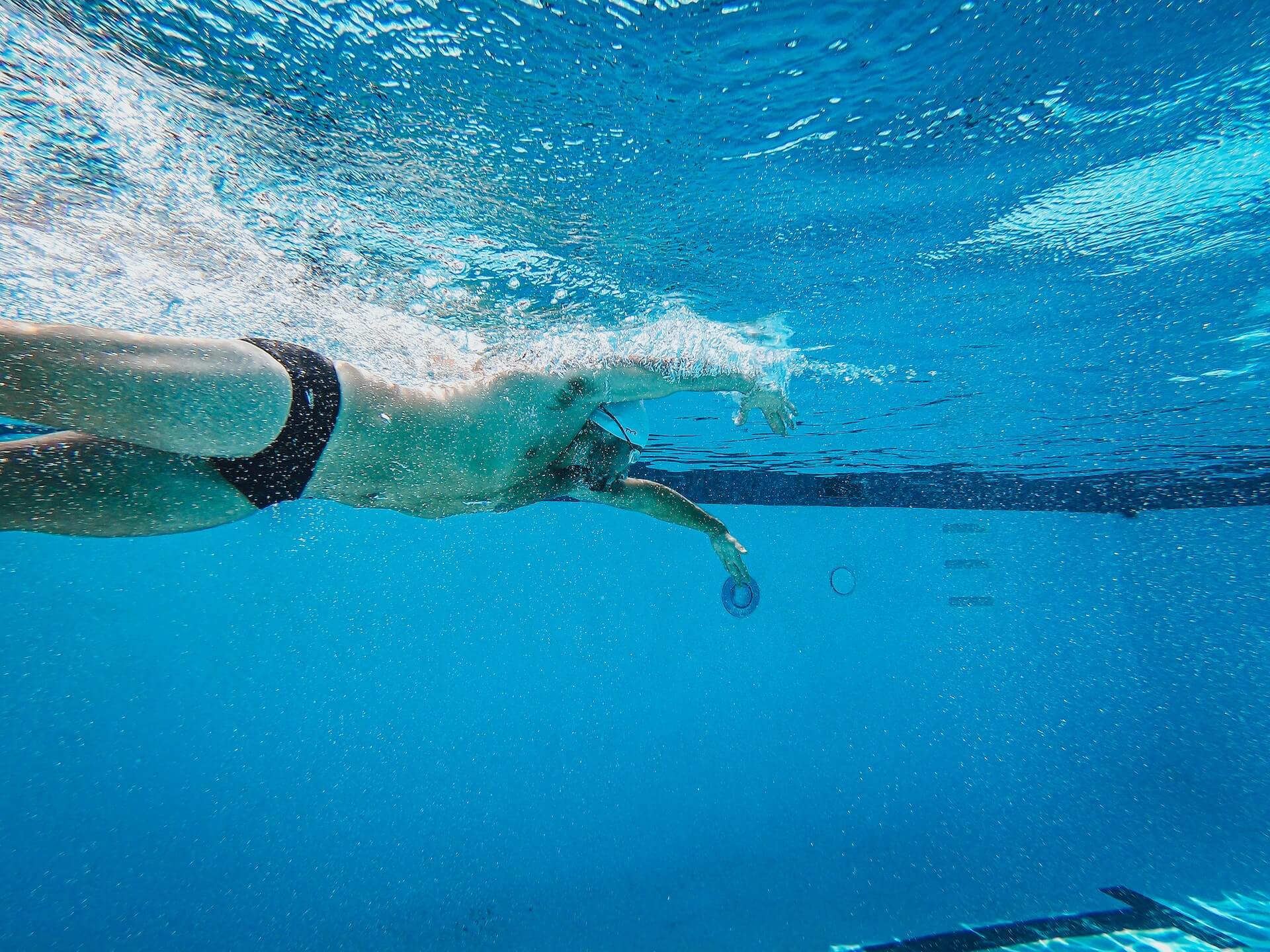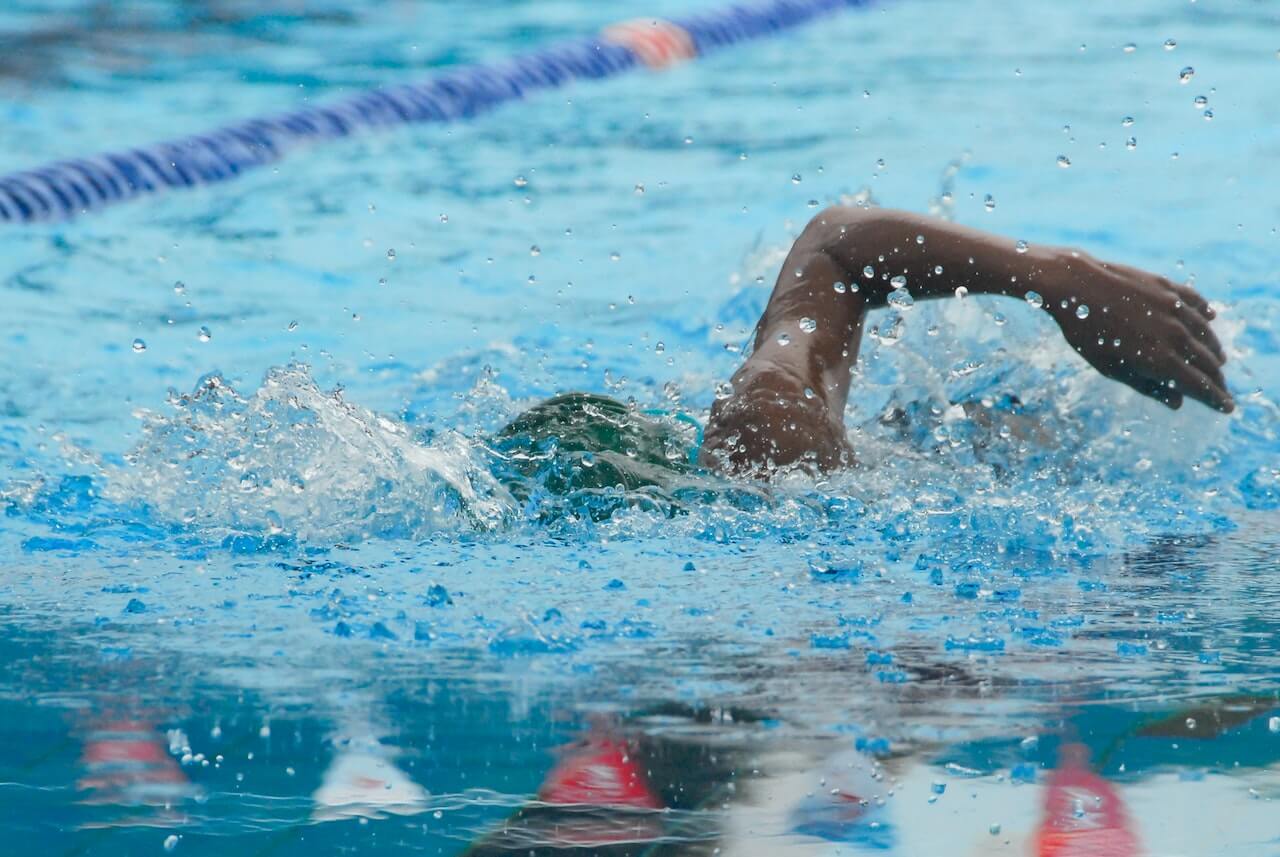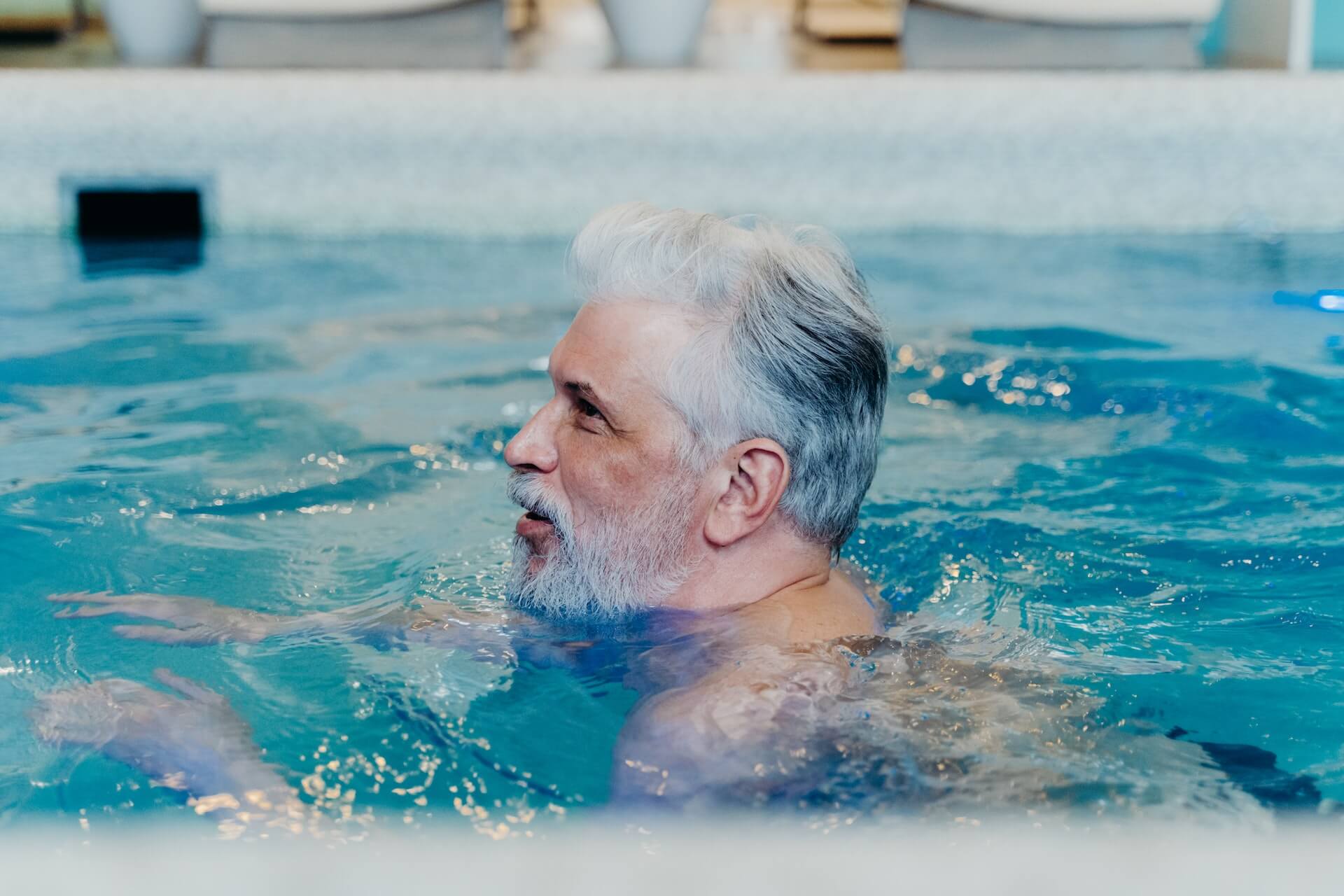A sport like swimming, which requires intense physical exertion while restricting one’s breath, requires large and efficient lungs. That is why many have wondered: in order to perform their superhuman feats of endurance, do swimmers have bigger lungs than most other people?

There is evidence to support that swimming helps improve both the size and function of your lungs, especially if you started swimming from a young age. However, one’s genetics also play a role, and some people are genetically gifted to have bigger lungs even if they aren’t swimmers.
In this article, we will discuss how swimming can contribute to bigger lungs, the influence of genetics on lung capacity, how swimmers compare to other athletes, and much more.
Lung Capacity and its Importance in Swimming
Before we go on, we need to first define what lung capacity means. In simple terms, lung capacity refers to the maximum amount of air your lungs can hold.
Now, lung capacity consists of different components: Total Lung Capacity (TLC), Vital Capacity (VC), and Functional Residual Capacity (FRC).
- TLC is the total volume of air that your lungs can hold when you take a deep breath.
- VC denotes the amount of air one can forcibly exhale after taking the deepest breath possible.
- FRC is the air left in the lungs after a normal exhalation.
So, why is lung capacity significant in sports and, more specifically, swimming? Well, when you’re engaged in any physical activity, your muscles require oxygen to convert stored energy into usable energy.
Your lungs play a central role here, as they take in oxygen from the environment and transport it to your blood, which then carries it to your muscles.
Swimming demands more from your lungs compared to land-based sports. This is because swimming requires efficient breath control and quick inhalation near Total Lung Capacity (TLC).
A larger lung capacity in swimmers allows for better oxygen delivery during extended periods of physical exertion, ultimately enabling them to perform better and sustain their effort longer.
Lung Capacity of Swimmers

Swimmers vs. Non-Athletes
You may wonder if swimmers have larger lungs than non-athletes. Well, studies have shown that physical activity positively influences the function of the human body system, and swimming has the most profound effect on the lungs.
Swimmers have been found to have larger lung volumes, such as total lung capacity (TLC) and vital capacity than non-athletes. This increased lung capacity allows swimmers to take in more oxygen during inhalation and exhale more effectively during prolonged underwater breath-holding.
While these larger lung volumes can be attributed to the unique breathing dynamics during swimming, it is important to note that increased lung capacity is not solely due to the physical activity. Factors such as genetics, training, and body size may influence an individual’s lung function.
Swimmers vs. Other Athletes
When comparing swimmers to other athletes, it’s worth noting that swimmers tend to have superior lung capacity.
Research shows that elite swimmers have an increased alveolar number and larger lung volumes like total lung capacity (TLC) and vital capacity in comparison to athletes involved in other sports.
These larger lung volumes and alveoli in swimmers contribute to efficient oxygen uptake and utilization during intense physical activities.
So, while it’s evident that swimmers generally have a higher lung capacity than other athletes, one must consider individual factors and training regimens when comparing lung function across different sports.
Factors Influencing Lung Capacity

Age and Lung Capacity
As you age, your lung capacity naturally changes. During childhood and adolescence, your lungs grow and develop, which can lead to an increase in lung capacity.
However, as you get older, lung capacity may decline due to decreased elasticity in lung tissue and weakened respiratory muscles.
Swimmers who begin training at a young age may experience a modification in their lung development as a response to their training, which could result in a larger lung capacity compared to non-swimmers of the same age.
Height, Weight, and Chest Dimensions
Your physical attributes, such as height, weight, and chest dimensions, can contribute to your lung capacity. Generally speaking, taller individuals with a larger chest capacity may have a greater lung capacity.
While swimmers may have larger lungs, recent studies have shown that this is not necessarily related to differences in height, sternal length, chest depth, or chest width. In other words, factors other than these common measurements are at play in the lung capacity of swimmers.
Genetic Factors
Genetic factors can play a significant role in determining lung capacity. Hereditary factors may determine individual variations in chest surface area or chest depth.
While these traits can impact lung capacity, it is still unclear how genetic factors specifically contribute to the superior lung capacity observed in swimmers.
It’s important to note that lung capacity is not solely determined by genetics (though there is an impact), and environmental factors such as training and lifestyle can also play a role in determining your lung capacity.
Impact of Swimming on Respiratory System
Respiratory Muscles and Exercise
Swimming is an excellent form of exercise for strengthening your respiratory muscles, as it requires you to use your diaphragm and other muscles in your chest and abdomen to draw in large volumes of air.
This increased demand for oxygen helps enhance your inspiratory muscle strength and overall respiratory capacity, leading to improved lung function and a stronger core.
As you practice breathing while swimming, your body becomes more efficient at removing lactic acid, which is produced during high-intensity exercise and contributes to muscle fatigue.
The improvement in your respiratory muscles also helps you handle physical activities better, whether you’re a runner or enjoy other forms of exercise.
Lung Function and Training Variables
The benefits of swimming for your respiratory system are influenced by various factors such as your age at the start of training, the intensity, and duration of your sessions.
Several improvements can be seen in lung function, including increased alveolar distensibility, enhanced elastic recoil, and improved pulmonary diffusion capacity.
Swimmers often have larger lungs and better gas diffusion capacity than non-athletes, which means they can efficiently transfer oxygen from the air they breathe into their bloodstream and expel carbon dioxide. This increased lung capacity is particularly beneficial for cardiovascular health.
Since swimming is a non-weight-bearing exercise, water immersion helps reduce the strain on your joints and muscles, allowing you to train intensively with less risk of injury. This advantage also plays a role in preserving your overall health and improving your heart rate.
Swimming Styles and Breathing Techniques
Different swimming styles, such as freestyle, butterfly, and breaststroke, require you to develop and adapt various breathing techniques. These techniques teach you how to control your breath and efficiently use your respiratory muscles while underwater.
Freestyle swimmers typically take a breath every two or three strokes, whereas breaststroke swimmers use a more rhythmic and controlled breath pattern. The butterfly stroke demands a quick intake of air when your head rises above water, followed by controlled exhalation underwater.
By mastering these techniques, you learn how to optimize your oxygen intake and effectively utilize your respiratory system, which is beneficial not only for swimming but for overall health as well.
Misconceptions about Swimmers’ Lung Capacity
Does swimming lead to increased lung size?
While it’s true that many swimmers appear to have superior lung capacity compared to non-swimmers, this doesn’t necessarily mean that swimming itself causes a larger lung size. Some swimmers may naturally have larger lungs due to their genetics, which could contribute to their choice to participate in the sport and excel in swimming. So, correlation doesn’t always mean causation.
Clearing confusion: lung capacity vs. lung size
There’s often confusion between lung capacity and lung size. Lung capacity refers to the total amount of air that your lungs can hold, while lung size is the physical dimensions of your lungs. Understanding this difference is important because having a larger lung capacity doesn’t always equate to a larger lung size.
When we talk about swimmers having larger lungs, it’s essential to note that they often display an increased lung capacity, not necessarily a larger lung size. Swimmers tend to develop exceptional pulmonary function attributed to their need for rapid inhalation near total lung capacity and prolonged exhalation coordinated with their swimming strokes.
So next time you come across claims about swimmers having bigger lungs, remember that it is mostly about their lung capacity rather than the physical size of their lungs.
Frequently Asked Questions
Do swimmers have larger rib cages?
Yes, swimmers often have larger rib cages compared to non-swimmers. Developing physically wider chests can help swimmers achieve greater lung volumes. However, it’s difficult to definitively state whether swimming is the primary reason for a larger rib cage or if individuals with naturally large rib cages are more inclined to participate and excel in swimming.
How does lung capacity compare between athletes and non-athletes?
Lung capacity tends to be higher among athletes compared to non-athletes because they train their respiratory systems to endure physical exertion. This is particularly true for sports like swimming, where having a superior lung capacity is vital for performance. However, every person’s lung capacity can vary, and several factors like age, genetics, and overall health can influence it.
What is the lung capacity of Olympic swimmers?
The lung capacity of Olympic swimmers can be significantly larger than that of non-swimmers or athletes in other sports. Lung capacity varies among individuals, so there isn’t a definitive number, but elite swimmers tend to have larger lung volumes, enabling them to perform at the highest level.
Which athletes possess the largest lung capacity?
Swimmers have the largest lung capacities compared to athletes in other sports. Swimming demands high lung capacity, as it is a whole-body, endurance-based activity that requires efficient oxygen delivery throughout the body. However, other endurance athletes, like long-distance runners and cyclists, may also have large lung capacities relative to their sport’s necessities.
Sources:
